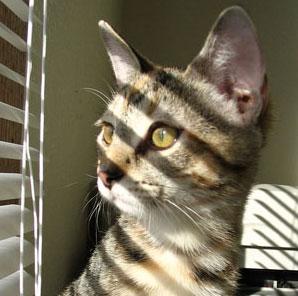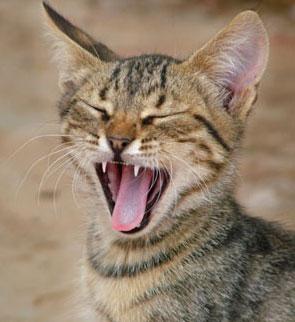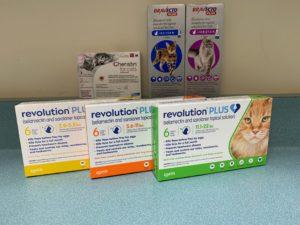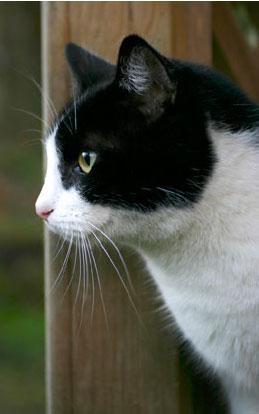FIV is Feline Immunodeficiency Virus. It is in the same family of viruses as FeLV in cats and HIV in people. The disease causes problems with the immune system similar to HIV in people. While the disease itself is not fatal, cats with FIV are not able to fight bacterial infections and other diseases as easily as cats without the disease.
The most common signs seen in a cat that has become sick secondary to an FIV infection are upper respiratory diseases (runny nose, coughing), oral cavity disease (severe gingivitis), skin infections, and intestinal disorders (diarrhea). Early signs may include diarrhea, fever and swollen lymph nodes.
Cats with FIV may live many years without developing clinical signs of the disease. To help keep these patients healthy from secondary infections, and to prevent spread of the disease, it is recommended that all FIV positive cats be kept strictly indoors.
How can my cat get the disease?
The primary mode of transmission of FIV is through bite wounds. Adult cats that are allowed to freely roam outdoors are at highest risk. Cats that reside in a household with a cat that has FIV are not typically at risk unless there is aggression between housemates. Sharing water/food bowls and litter boxes does not pose a risk for other cats in the household. The virus can rarely be transmitted through the mother to kittens either in the womb or through the milk. More commonly, maternal antibodies to FIV are passed through the milk, so that kittens from FIV positive mothers will test positive on currently available tests. This is not a true infection and as such, kittens must be at least 6 months old before accurate testing can be done.
Can I get the disease from my cat?
This virus is specific to cats, so people cannot get FIV and cats cannot get HIV.
How can I prevent my cat from getting this disease?
The only 100% effective way to prevent the disease is to keep your cats inside at all times. It is estimated that between 1-3% of all cats (pet and stray cat populations) are infected with FIV. Uncastrated adult males that are free roaming are the highest risk, but any cat that is allowed access to the outside can potentially develop the disease, if exposed. There are two strains (also known as clades) of FIV in the United States, A and B. The prevalence of each clade varies around the country, and in California there is about equal distribution of clades A and B.
The Fort Dodge Company, in conjunction with researchers at UC Davis and University of Florida, have developed a new vaccine against FIV infections. In experimental trials, this vaccine was found to be about 80% effective at preventing infection against FIV clade type A.
What are the vaccine risks and benefits?
While a vaccine that protects cats from FIV infections may sound like a wonderful development, the benefits of the vaccine need to be weighed against its negative aspects. No vaccine is 100% effective. The new FIV vaccine appears to be fairly effective, but even with vaccination, there is a chance that a cat can still develop the disease.
The most controversial aspect to FIV vaccination is that any cat vaccinated for FIV will test positive on all current FIV tests. Which means that if a cat is vaccinated and later becomes exposed to FIV, there is no current test to determine that the cat has the disease. Our current commercially available diagnostic tests are not able to distinguish antibodies produced by the disease from antibodies produced by vaccination. There is, however, a new test on the horizon that shows promise at being able to differentiate between a vaccinated and an infected cat.
If you choose to vaccinate your cat for FIV I strongly recommend microchipping so that a vaccine history may be obtained. You would not want to have some rescue organization think your cat is actually FIV infected if tested.





